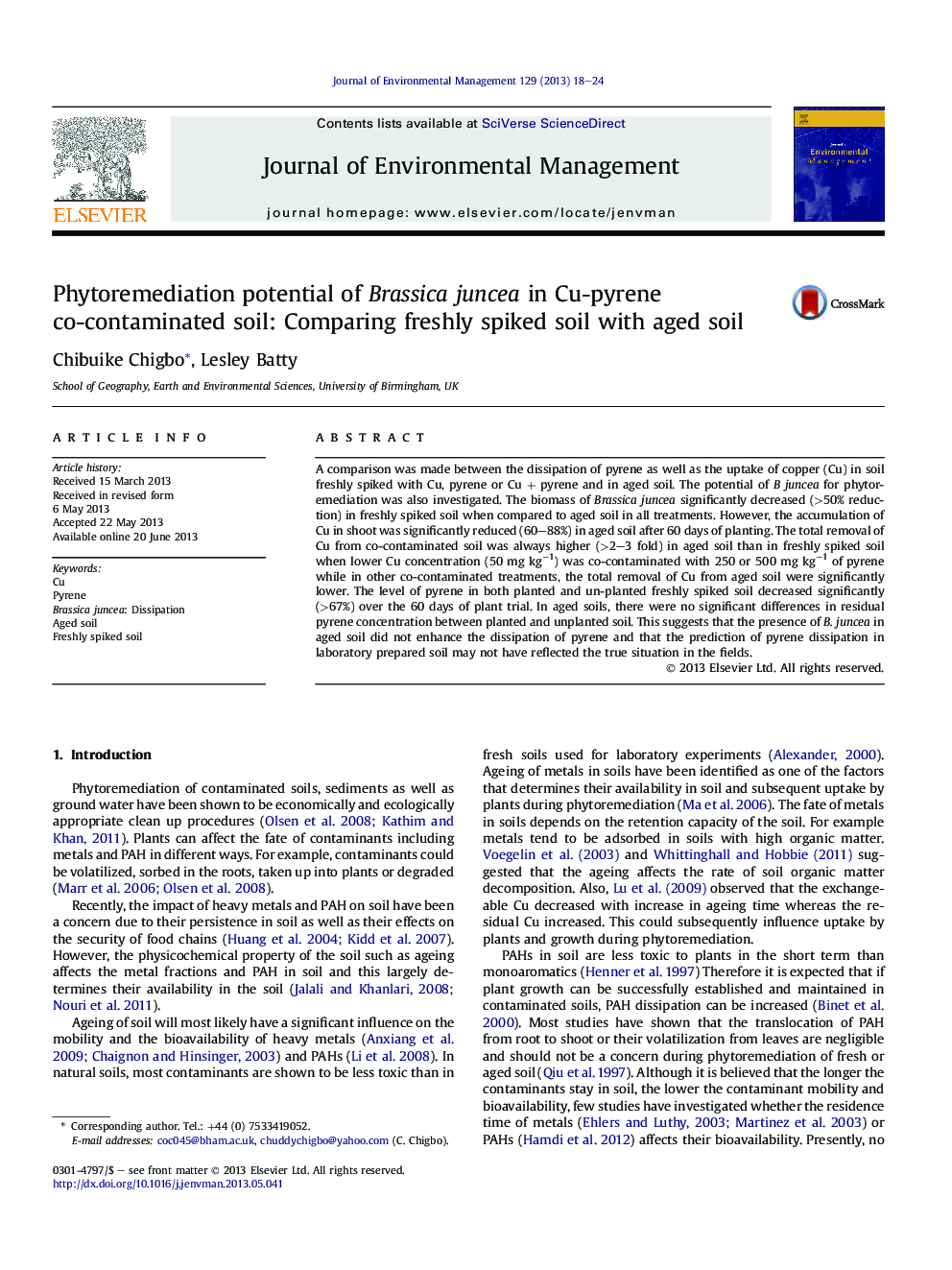| Article ID | Journal | Published Year | Pages | File Type |
|---|---|---|---|---|
| 1056140 | Journal of Environmental Management | 2013 | 7 Pages |
•Brassica juncea had lower biomass in freshly co-contaminated soils than in aged soils.•B. juncea accumulated less Cu in aged co-contaminated soil than in freshly spiked soils.•B. juncea did not enhance the dissipation rate of pyrene in aged co-contaminated soils.•B. juncea enhanced the dissipation of pyrene in freshly co-contaminated soils.
A comparison was made between the dissipation of pyrene as well as the uptake of copper (Cu) in soil freshly spiked with Cu, pyrene or Cu + pyrene and in aged soil. The potential of B juncea for phytoremediation was also investigated. The biomass of Brassica juncea significantly decreased (>50% reduction) in freshly spiked soil when compared to aged soil in all treatments. However, the accumulation of Cu in shoot was significantly reduced (60–88%) in aged soil after 60 days of planting. The total removal of Cu from co-contaminated soil was always higher (>2–3 fold) in aged soil than in freshly spiked soil when lower Cu concentration (50 mg kg−1) was co-contaminated with 250 or 500 mg kg−1 of pyrene while in other co-contaminated treatments, the total removal of Cu from aged soil were significantly lower. The level of pyrene in both planted and un-planted freshly spiked soil decreased significantly (>67%) over the 60 days of plant trial. In aged soils, there were no significant differences in residual pyrene concentration between planted and unplanted soil. This suggests that the presence of B. juncea in aged soil did not enhance the dissipation of pyrene and that the prediction of pyrene dissipation in laboratory prepared soil may not have reflected the true situation in the fields.
